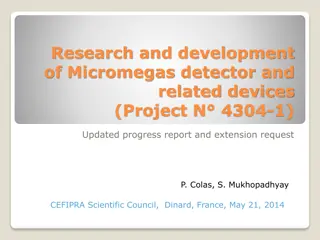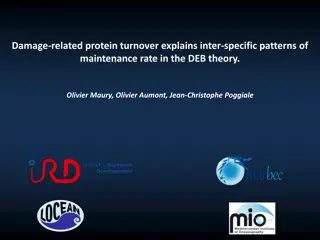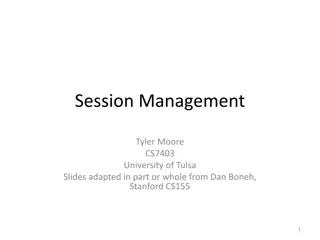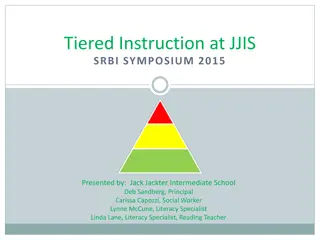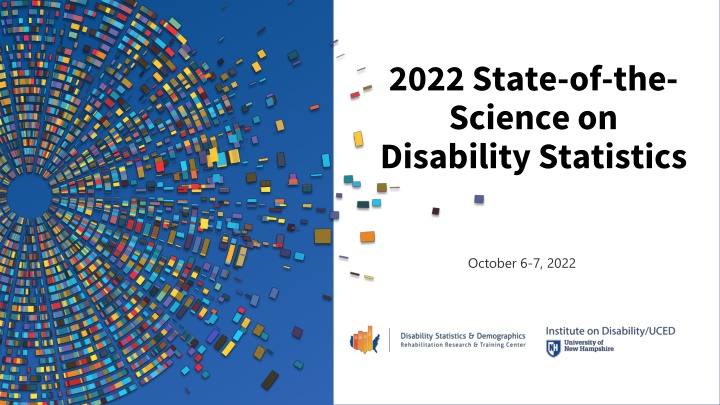
Food Sufficiency and Resource Accessibility for Americans with Disabilities
Explore a study on food sufficiency and free food resource utilization among working-age Americans with disabilities during the COVID-19 pandemic. The research delves into disparities, barriers to access, and key findings based on survey data.
Download Presentation

Please find below an Image/Link to download the presentation.
The content on the website is provided AS IS for your information and personal use only. It may not be sold, licensed, or shared on other websites without obtaining consent from the author. If you encounter any issues during the download, it is possible that the publisher has removed the file from their server.
You are allowed to download the files provided on this website for personal or commercial use, subject to the condition that they are used lawfully. All files are the property of their respective owners.
The content on the website is provided AS IS for your information and personal use only. It may not be sold, licensed, or shared on other websites without obtaining consent from the author.
E N D
Presentation Transcript
2022 State-of-the- Science on Disability Statistics October 6-7, 2022
Food sufficiency and the utilization of free food resources for working-age Americans with disabilities during the COVID-19 pandemic Debra L. Brucker, PhD Grace Stott, MS Kimberly Phillips, PhD
This research was supported by grant 90RTGE0001 from the Administration for Community Living (ACL) s National Institute for Disability, Independent Living, and Rehabilitation Research (NIDILRR) grant H133B130015 from the U.S. Department of Health and Human Services (HHS), and by grant T73MC33246 from the HHS Maternal and Child Health Bureau, Health Resources and Services Administration (HRSA), administered by the Association of University Centers on Disabilities (AUCD). Acknowledgements
Americans with disabilities are Disproportionately impacted by economic downturns (Jones et al., 2020; Kaye, 2010; Livermore & Honeycutt, 2015; McAlpine & Alang, 2021). Background More likely to reside in households that experience food insecurity (Brucker, 2016; Brucker & Nord, 2016; Brucker & Coleman-Jensen, 2017; Coleman-Jensen, 2020; Heflin et al., 2019; Sonik et al., 2016). More likely than others to visit food banks (Chiu et al, 2016; Miewald & McCann, 2014).
1) What was the level of food sufficiency for people with and without disabilities prior to the COVID-19 pandemic (March 2020) and in the midst of the COVID-19 pandemic (September 2020)? Research questions 2) Were persons with disabilities more likely to access free food resources than persons without disabilities during the pandemic? 3) What barriers to accessing free food resources did people with disabilities note?
Data: Qualtrics survey of adults aged 18-64, September 2020 (n=13,270) * Fielded before Census Household Pulse Survey added disability questions in Spring 2021 Data, measures, analysis (1) Food-related measures: 1) Food sufficiency (USDA food sufficiency screener) 2) Reasons for not having enough to eat or what wanted to eat Couldn't afford to buy more food Couldn't get out to buy food Afraid to go or didn't want to go out Couldn't get delivery Stores didn't have food I wanted 3) Where respondents received free groceries/meals past 7 days 4) Barriers to using food programs or food pantries past 7 days
Focal variable: 1) Disability (any ambulatory, cognitive, hearing, independent living, self-care, vision limitations (yes/no)) Data, measures, analysis (2) Covariates: 1) Age 2) Race/ethnicity 3) Education 4) Income 5) Employment status 6) Use of SNAP (nutrition assistance) benefits 7) Region of country (Northeast, South, Midwest, West) Analysis: 1) Descriptive statistics, bivariate analysis, logistic regressions
Adjusted food sufficiency estimates for working-age individuals in the U.S. 90.00 Findings: Food sufficiency 80.00 70.00 60.00 50.00 40.00 30.00 20.00 10.00 0.00 Pre-COVID During COVID Disability No disability
Findings: Use of free food resources (1) Among those who did not have sufficient access to food, reasons why: Disability No disability % % Couldn't afford Couldn't get out Afraid to go out Couldn't get delivery 90 73 74 75 82 62 67 81 *All statistically different at p<.001
Findings: Use of free food resources (2) People with disabilities had significantly greater odds (OR: 1.86, p<.001) of using free food resources, when controlling for age, gender, race, income, employment, SNAP, and region of the country. No Disability Sig. disability % % 58 41 Any free food past 7 days *** Among those who received free food in past 7 days, where received: 40 50 35 41 33 38 86 40 40 35 37 28 34 83 Through the school or other program aimed at children Food pantry or food bank Home delivered services like Meals on Wheels Religious institution Shelter or soup kitchen Other community program Family, friends, or neighbors *** ** *** ** ** **p<.01; ***p<.001
Barriers to accessing free food No Disability disability % Findings: Barriers to accessing free food % Concern about paperwork 47 39 Concern wouldn't qualify 57 44 Not wanting to rely on food programs/pantries 63 53 No transportation to food program/pantry 50 30 Long lines, wait times 55 42 Fewer deliveries/reduced hours due to COVID 55 45 Difficulty preparing food 54 41 Worried others will find out use programs 49 37 *All statistically different at p<.001
Covid-19 pandemic disproportionately and negatively impacted food sufficiency for persons with disabilities in the U.S. The adjusted proportion of working-age persons without disabilities who were food sufficient during the pandemic (September 2020) (73%) remained higher than the adjusted proportion of working-age individuals with disabilities who were food sufficient prior to the pandemic )(March 2020)(65%). Conclusion Pandemic highlights barriers to accessing free food for persons who are struggling to maintain food sufficiency. Additional research is needed to test interventions that can address food insufficiency and food insecurity among persons with disabilities, including for specific subpopulations (e.g., persons with serious mental illness, persons with physical limitations, etc.). Brucker, D.L., Stott, G. & Phillips, K. (2021). Food sufficiency and the utilization of free food resources for working-age Americans with disabilities during the COVID-19 pandemic. Disability and Health Journal.
Brucker DL. Food security among young adults with disabilities in the United States: findings from the national health interview survey. Disability and Health J. 2016;9(2):298e305. https://doi.org/10.1016/j.dhjo.2015.10.003. Brucker DL, Coleman-Jensen A. Food insecurity across the adult life span for persons with disabilities. J Disabil Pol Stud. 2017;28(2):109e118. doi: 10.1177/1044207317710701. Brucker DL, Nord D. Food insecurity among young adults with intellectual and developmental disabilities in the United States: evidence from the National Health Interview Survey. Am J Intellect Dev Disabil. 2016;121(6):520e532. doi: /10.1352/1944-7558-121.6.520. Chiu C, Brooks J, An R. Beyond food insecurity. Br Food J. 2016;118(11): 2614e2631. https://doi.org/10.1108/BRJ-02-2016-0055. Coleman-Jensen A. Thirty Years after Enactment of the Americans with Disabilities Act, Disabilities Remain a Risk Factor for Food Insecurity. Washington, DC: USDA; 2020. Kaye SH. The impact of the 2007-09 recession on workers with disabilities. Mon Labor Rev. 2010:19e30. October 2010. Livermore G, Honeycutt T. Employment and economic well-being of people with and without disabilities before and after the Great Recession. J Disabil Pol Stud. 2015;26(2):70e79. doi: 10.1177/1044207315583875. Jones M, Hoque K, Wass V, Bacon N. Inequality and the economic cycle: disabled employees' experience of work during the Great Recession in Britain. Br J Ind Relat. 2020. doi:10.1111/bjir.12577. McAlpine DD, Alang SM. Employment and economic outcomes of persons with mental illness and disability: the impact of the Great Recession in the United States. Psychiatric Rehabilitation J. 2021;44(2):132e141. doi:10.1037/prj0000458. Heflin C, Altman CE, Rodriguez LL. Food insecurity and disability in the United States. Disability and Health J. 2019;12(2):220e226. doi: 10.1016.j.dhjo.2018.09.006. Epub 2018 Oct. 6. Miewald Cl, McCann E. Foodscapes and the geographies of poverty: sustenance, strategy and politics in the urban neighborhood. Antipode. 2014;46(2): 537e556. doi: 10.1111/anti.12057. Sonik R, Parish SL, Ghosh S, et al. Food insecurity in U.S. households that include children with disabilities. Except Child. 2016;83(1):42e57. References








